Drone Fishing is a relatively new sport that has taken the fishing world by storm. It involves using a remote-controlled drone to cast your line and bait into the water in order to catch fish. While it may seem like a difficult task, Drone Fishing can be easily mastered with a little practice. In this article, we will provide you with all the information you need to learn about how to drone fish.
Intro On How To Drone Fish
Drone Fishing Involves Using a Remote-Controlled Drone to Cast Your Line and Bait Into the Water. The Drone Is Equipped With A Release Mechanism, Allowing You to Drop Your Bait at Specific Locations. Drone Fishing Allows for Greater Access to Hard-To-Reach Areas, as well as Increased Accuracy in Casting Your Line.
How Does Drone Fishing Work?
First, make sure that your drone is equipped with a release mechanism. This can be either electronic or mechanical in nature. Once you have selected your bait and chosen a spot, take off with the drone and gently engage the release mechanism at the desired location. Adjust the line tension to ensure that it stays above any obstacles such as shore break.
When choosing a spot, consider using the drone’s camera to scout out potential locations or track fish movements. Drone Fishing also allows for greater accuracy in casting your line, as you can drop the bait directly onto specific targets rather than casting blindly into the water.
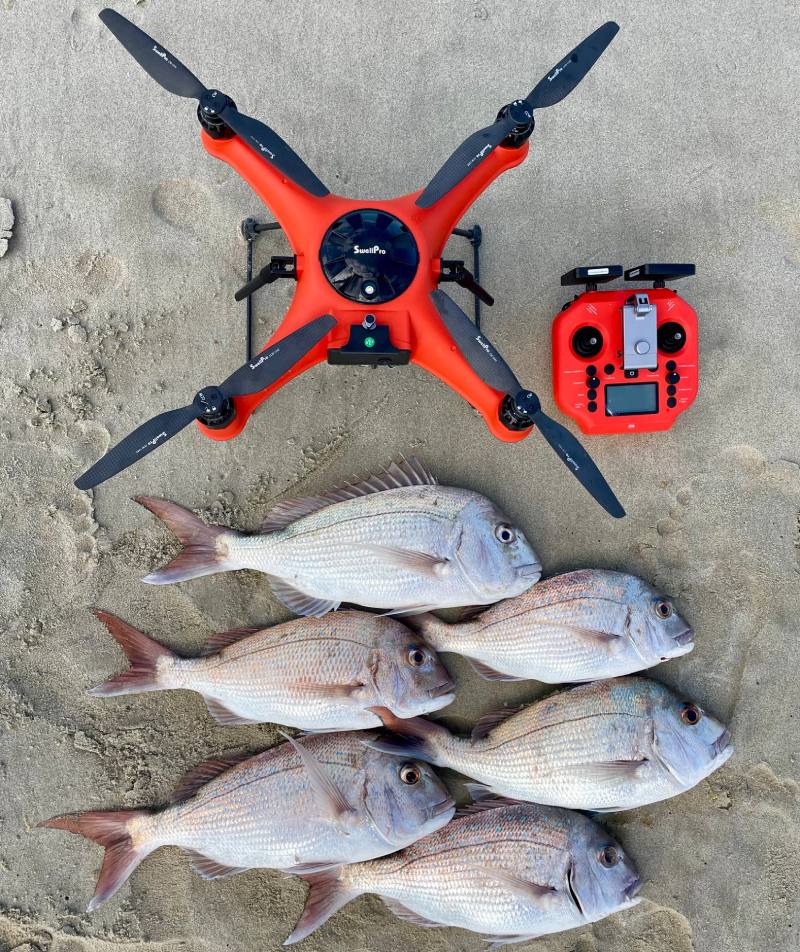
What Are The Benefits of Drone Fishing?
So why should you learn how to drone fish? One of the main benefits of Drone Fishing is increased access to hard-to-reach areas. This allows for greater exploration and potential for a successful catch. Drone Fishing also requires less physical exertion, making it a great option for those with mobility issues or injuries.
What Equipment Do I Need?
Before you begin learning how to drone fish, you will need the following equipment:
- release mechanism
- fishing line,
- bait,
- and a rod and reel
It is important to check local laws and regulations before Drone Fishing, as some areas may have restrictions on its use.
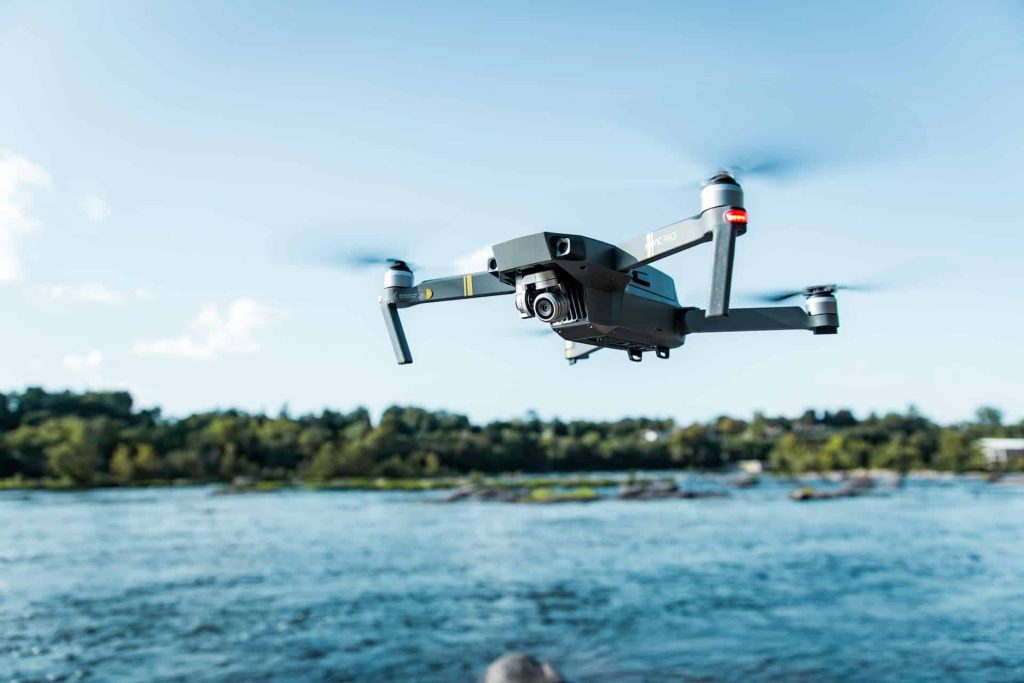
How Much Does It Cost To Start Drone Fishing?
The cost of Drone Fishing will vary depending on the type and quality of equipment you choose. An entry-level setup, including a non-waterproof drone and release mechanism, can range from $500-$700. However, as with any hobby, Drone Fishing can become more expensive as you upgrade your equipment and add additional features.
A purpose-built waterproof fishing drone can cost anywhere from $1,700 to $3,000 plus, depending on the features and quality you are looking for. While this may seem like a lot of money, a good quality fishing drone can provide years of enjoyment and save you time and effort in finding the best fishing spots. However, It is essential to do your research before investing in a fishing drone to make sure that you are getting the best possible value for your money.
What Can Drones Be Used For?
In addition to Drone Fishing, drones can also be used for various other purposes. With the increasing availability and affordability of drones, they have become popular tools in numerous industries.
Drone photography and videography have become popular among hobbyists and professionals alike as technology has advanced to the point where high-quality images and videos can be captured with ease.
Drones have also been used for surveying and mapping, as they provide a cheaper and faster alternative to traditional methods. Additionally, drones can be used for search-and-rescue operations, as they can access difficult-to-reach areas that would be otherwise inaccessible.
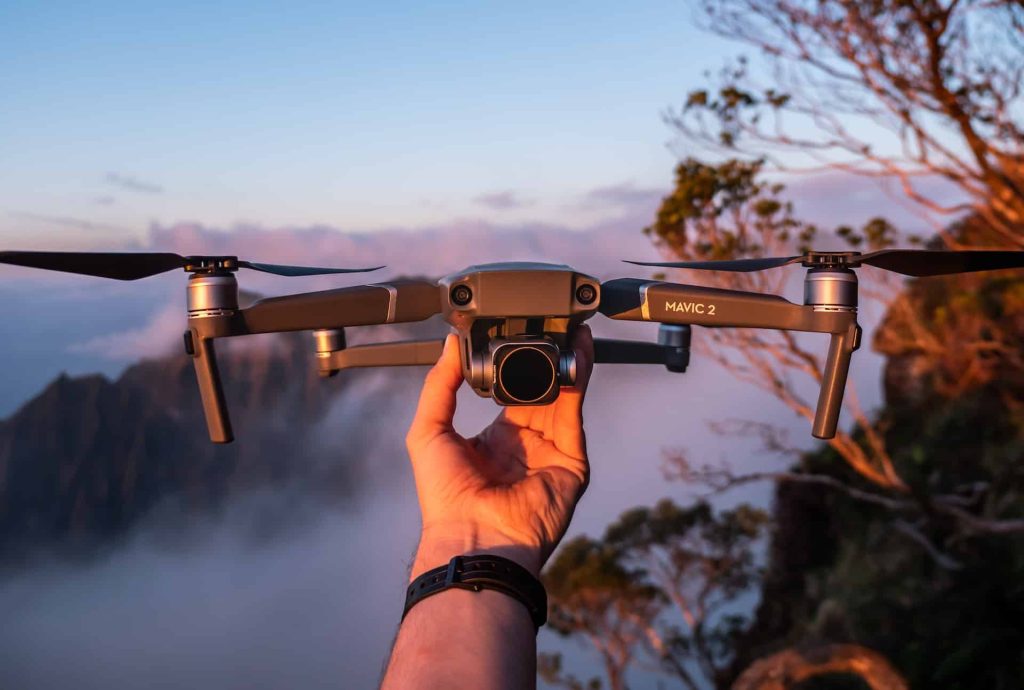
What Are Non-Waterproof Drones?
While Drone Fishing can be a great way to catch fish, it is important to select the right drone for the job. Not all drones are waterproof, and those that are not can quickly become damaged if used near water. This type of drone is typically used for land-based activities such as fishing or surveying. While they are not typically used for water-based activities, there are some models that can be used in wet environments.
The most common non-waterproof drones are those made by DJI. These include the DJI Mavic Pro, DJI Spark, and DJI Phantom 4 series. Other popular non-waterproof drones include the Yuneec Breeze 4K and Parrot Bebop 2 Power.
What Are Waterproof Drones?
A waterproof drone is specifically designed to be used in wet environments, making it a great option for Drone Fishing. These drones are typically more expensive than their non-waterproof counterparts, but they offer increased durability and are often able to fly in harsher weather conditions. Some popular waterproof drones include the DJI Mavic Pro Platinum, DJI Phantom 4 Pro, and Yuneec Typhoon H520.
For Drone Fishing in wet environments, it is important to select a waterproof drone. Popular options include the SwellPro Splash Drone 3+, PowerVision PowerEgg X Wizard, and Walkera Rodeo 110. It is also important to consider not only whether the drone itself is waterproof but also the remote control and any attached devices, such as cameras.

How To Drone Fish – Tip #1
What Should You Consider When Choosing a Drone?
One of the first step when learning how to drone fish is choosing the right drone; there are several factors to consider. The most important factors are the type of drone, the type of fishing, the water resistance, the weight capacity and the flying time.
Type of Fishing
It is also important to consider the type of fishing you want to do and select appropriate equipment accordingly. For example, if you are targeting larger fish, it may be necessary to invest in a stronger release mechanism that can handle the weight of the larger bait.
Water Resistance
In addition to the type of drone, it is important to consider the water resistance of the drone. Some drones are designed to be used in wet environments, while others are not. If you plan on using your drone near water or on partially wet days, it is important to select a water-resistant model.
Weight Capacity
It is important to consider the weight capacity of the drone, as well as its flight time and control range. These factors will determine how much equipment you can attach to the drone and how far it can fly out before needing to return for a battery change.
Flying Time
The last factor to consider is the flying time of the drone. Most drones have a flying time of 20-30 minutes, but some models have a flying time of up to 60 minutes. It is important to select a drone that has a flying time that meets your needs.
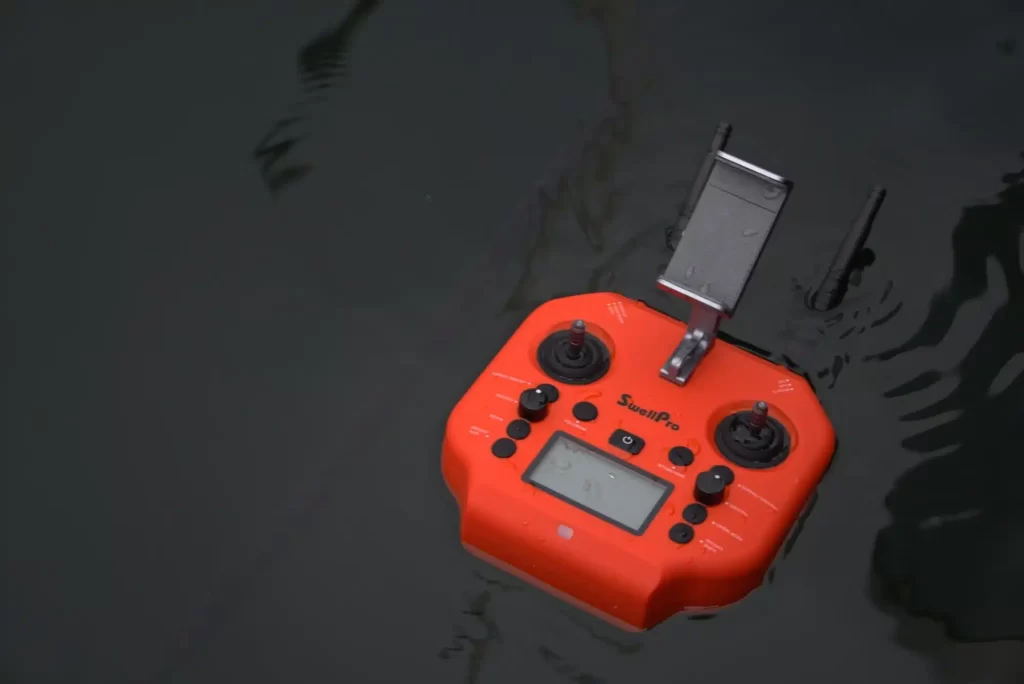
How To Drone Fish – Tip #2
Types of Drone Fishing Release Mechanisms
There are several bait release mechanisms you can choose from when you begin learning how to drone fish, depending on the type of drone you are using and whether it is waterproof or not.
Electronic Bait Release:
Electronic Bait Release Mechanisms are pretty straightforward to use and are especially great for drones that aren’t waterproof, like the DJI Phantom and DJI Mavic. The mechanism attaches to the body of the drone and has an actuator that opens and closes via a light sensor. The light sensor is fitted over the drone’s light, which is turned on and off using the drone remote control. You attach your drop loop into the actuator and send your drone out over the ocean; once your drone is out far enough, switch the drone light on; this will trigger the actuator to open, releasing your rig into the ocean.
If you have a drone specifically for fishing, it should come standard with an electronic bait release. Obviously, electronic bait releases need the power to function, so ensure it’s fully charged before take-off!
Drone fishing is an exciting and tactical way to get a catch, but please be careful when sending your drone out over the water; line snags, reel binds, and even birds can send your drone in a spiral.
Mechanical & Tension Releases:
These types of mechanisms are often considered the safest alternative, any issues with the reel, including binds and line snags, will result in the line’s automatic release. This prevents your drone from hitting anything and crashing.
Tension releases work by using spring-loaded pressure on the line, which is released when you pull on it to drop your bait.
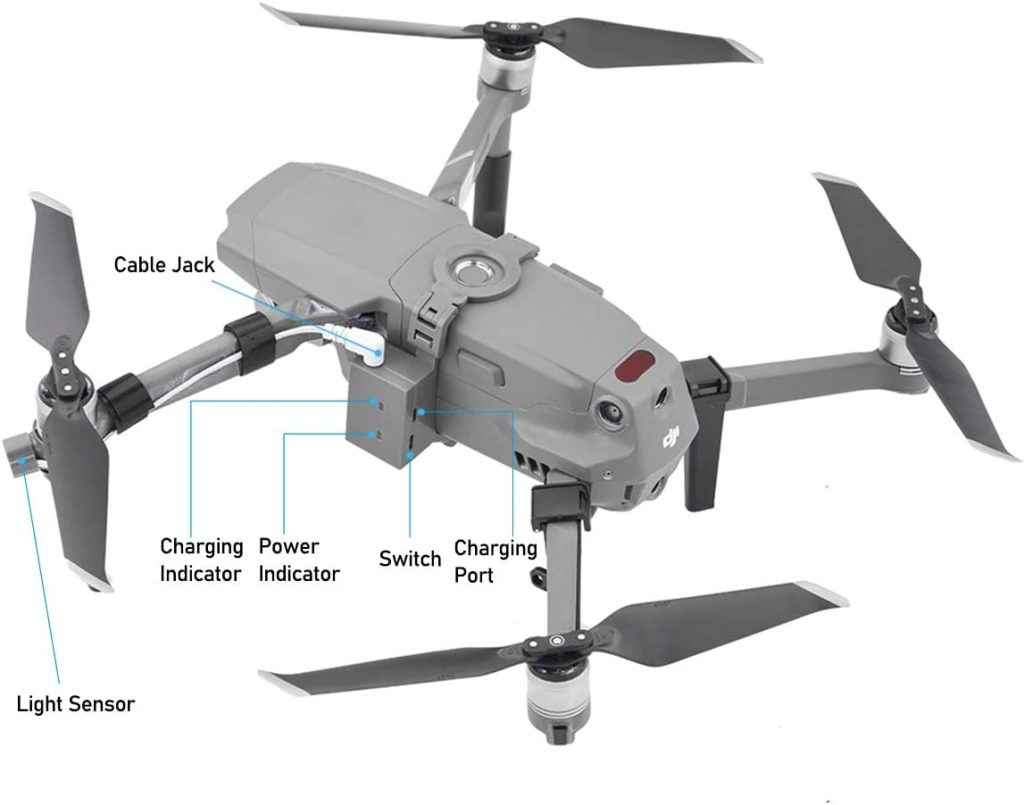
How To Drone Fish – Tip #3
How To Choose The Best Fishing Rod For Drone Fishing
If you’re looking to start drone fishing, there are a few things you need to take into consideration when choosing your fishing rod.
You may think beach rods are the best option for drone fishing, however, they are typically designed for on-shore casting and aren’t equipped to cope with reeling in deep-water fish.
On the other hand – offshore boat rods are durable enough to reel in big fish, but they struggle to keep the fishing line above the crashing waves due to their height.
The perfect Drone Fishing rod is one that’s both strong and durable enough to constantly handle large line retrievals while also being tall enough to keep the line above any breaking waves onshore. Lucky for us, fishing brands like Oannes, Valkyrie and Atargatis have created their own drone fishing rods perfect for the occasion.
Remember to also choose a reel with a large spool capacity and high drag rating. You’ll be ready for successful drone fishing trips with the right equipment.
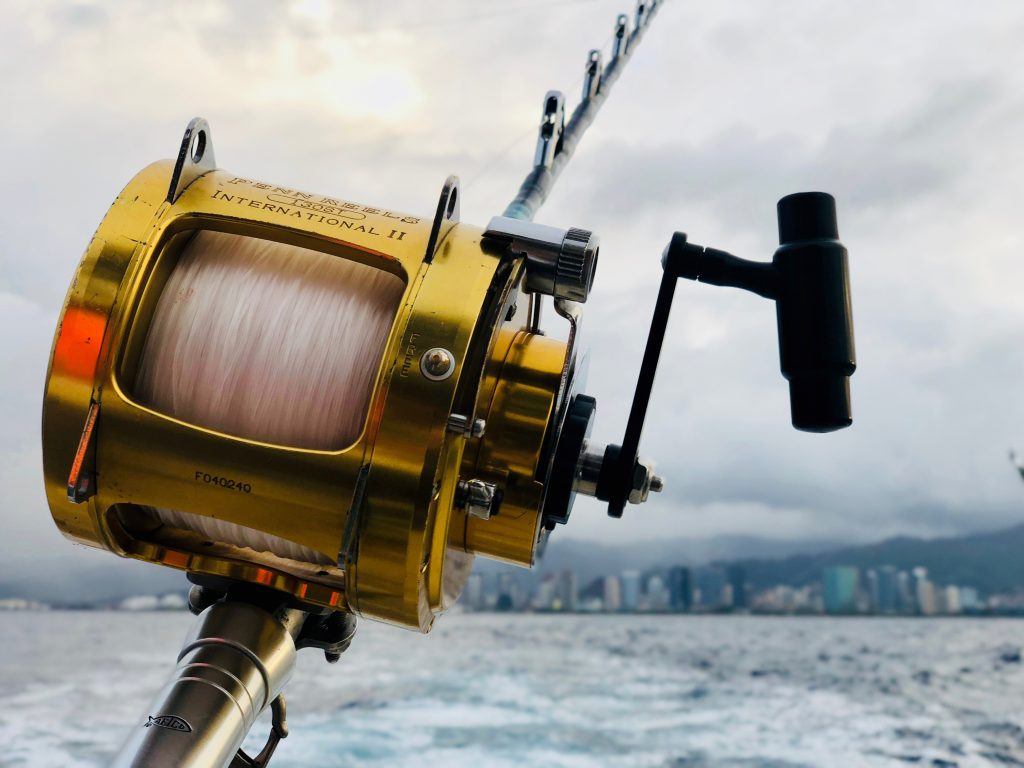
How To Drone Fish – Tip #4
What are the best types of fishing reels to use for drone fishing?
When learning how to drone fish, you will discover that Drone fishing offers a new and exciting perspective when it comes to reeling in your catch.
A variety of drone fishing reels can be used, each with their own advantages and disadvantages.
Spinning and overhead reels are the most common types of drone fishing reels and may be used for different types of rods.
Overhead Reels
These reels have a more traditional design and feature a line spool that sits on top of the rod. They offer strong drag systems and are best for larger, heavier fish.
Spinning Reels
These reels have a smaller and more compact design, with the line spool sitting under the rod. They work well for light to medium-sized fish but may not have as strong of a drag system as an overhead reel.
Drag ratings between 20-35kg species dependent are recommended, with spool volumes of between 500-600 metres at a minimum.
The amount of force required to break the line depends on two factors: the type of line used and the diameter of that line.
Consider your personal preferences, the type of fish you’re targeting, and any additional drone fishing equipment needs when choosing the right drone fishing reel for you.
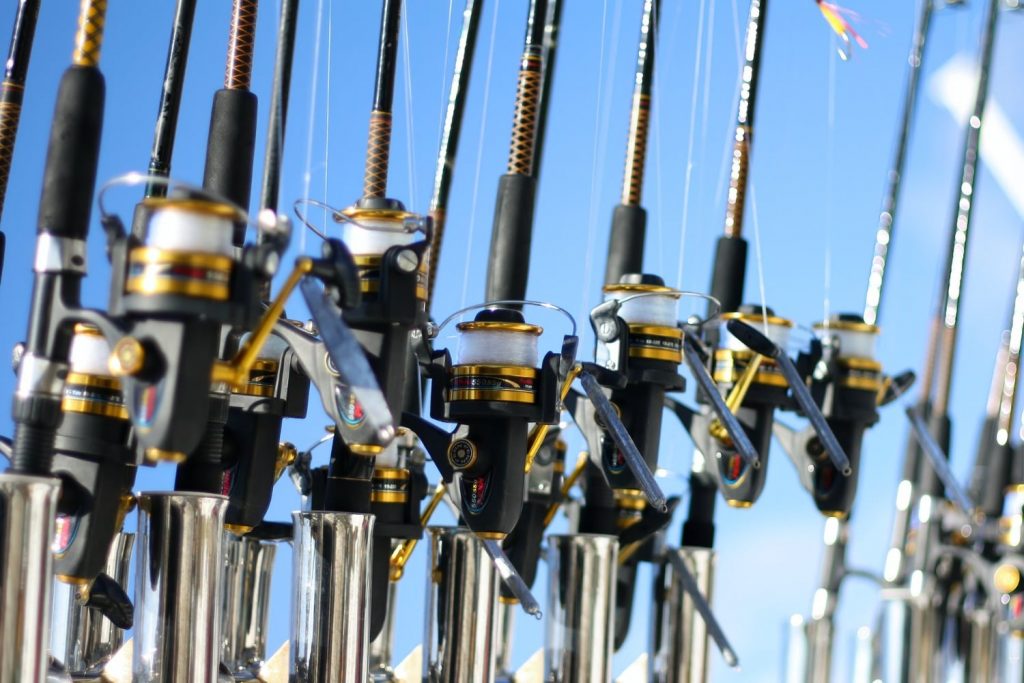
How To Drone Fish – Tip #5
Choosing The Right Line
When you go drone fishing, the line you use should be thin with a high breaking point. That way, you can fit more onto the reel. Also, thinner braids create less drag when fighting against wind and water resistance. This is an essential tip when learning how to drone fish.
Polyethylene, also known as PE, The Japanese system of measurement for line diameter is ‘Area,’ originally used to measure silk thread. However, because it only measures diameter but not breaking strain, this has caused much confusion.
It’s important to note that PE ratings can differ depending on the manufacturer, this is due to things like material, method of manufacturing and how many braid strands were used during production.
Braided Line
Braided line, is often the preferred choice for drone fishing as it does not stretch like monofilament and has a higher breaking strain for its diameter. Fluorocarbon, on the other hand, is less visible underwater and excellent for clear water conditions.
Choose a braid with a low PE, and make sure the rating of the break strain matches those of the rod you’re using. Drone fishing usually needs line capacities between 500 and 600 metres, so if you have a smaller diameter ‘PE’, you’ll be able to fit more on the reel.
Abrasion resistance and quality are other important factors to consider. Having a silky smooth braid will prevent reel bind and heat build-up during long fishing retrievals. Mono shock leader material is also ideal to use.
Monofilament or Fluorocarbon Line
Mono is a cost-effective choice and can work well. However fluorocarbon is the superior choice, this is because it’s more resistant to abrasions than mono and is more difficult to spot in the water. Additionally, fluorocarbon typically has a smaller diameter than monofilament, but maintains the same amount of breaking strength – so you can fit more on your spool!
Bottom line: choose a thin, high-breaking strain braid or fluorocarbon for drone fishing. Consider abrasion resistance and quality as well, and make sure the break strain ratings match up with your rod’s capabilities. And don’t forget to use a fluorocarbon or mono shock leader material.
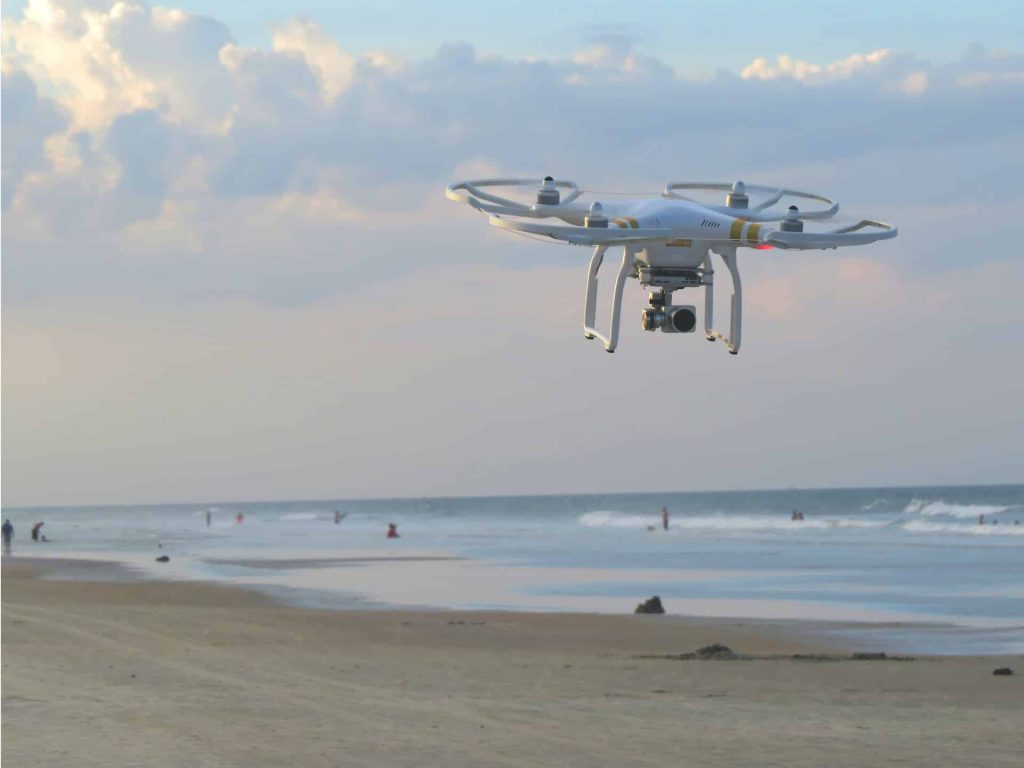
How To Drone Fish – Tip #6
Drone Fishing Rigs 101
It is crucial to understand the Pendulum effect. If your drone is flying out too quickly and your rig with your bait and sinker is too close to your drone it will swing back and forth like a pendulum, causing instability to your drone. The pendulum effect has been the cause of many drones crashes so it’s important to understand how we can prevent it.
So to be clear, The closer the drone is to the weight, the bigger the pendulum effect will be — increasing the chances of the line getting tangled and crashing catastrophically. We recommend keeping the weight around 4 to 6 metres below the pivot point of your drone. Experiment with different types of rigs to find what works best for your fishing.
Anatomy of The Perfect Drone Fishing Rig
The ideal length for a simple drone fishing rig is 4 to 6 meters, and a standard rig typically contains the following elements in this order:
- Connect the three-way swivel to your mainline, and then secure the one-metre drop loop onto the side of the three-way swivel. (This is used to connect to the bait release on your drone.) Use a one and half metre Fluro carbon line that connects the three-way swivel at each end.
- The three-way swivel allows you to connect your hooks, this set-up should be around the 30cm mark. Your hook setup will change depending on the type of fish you are targeting.
- Use a light gauge Fluorocarbon or monofilament about one and a half metres long, attached to a sinker at the base of the three-way swivel. The type and weight of your sinkers will depend on conditions such as floor structure, currents, and wind speed.
You can easily adapt this rig to fish deeper water by adding a secondary hook, or extend it to target specific depths.

How To Drone Fish – Tip #7
Preparation & Precautions
The more you practice, the fewer mistakes you’ll make.
Drone fishing isn’t as easy as it looks. If you have little experience flying drones, please don’t jump straight into the deep end and send bait out left, right, and centre (trust us, this won’t end well). Instead, take the time to get to know your drone, practice flying in a park or somewhere open and get a feel for the controls, and then practice using the release mechanism to ensure you know exactly what to do.
When you first start learning how to drone fish, you might want to use a cheaper drone until you have mastered the basics, then upgrade when you feel more comfortable.
The amount of time you spend practising your flight routine and learning how to drone fish will be the difference between success and failure.
Keep Spare Parts Handy
- One rookie error people make when learning how to drone fish is not bringing spare parts on their fishing trips. It is essential to have a backup set of propellers and check them for any damage before each flight. They are much less expensive than replacing an entire drone if something happens mid-flight.
- A shock leader of at least 15 metres is required when using a braided line; this will ensure stretch and resistance to abrasion.
- Make sure to have some spare batteries on hand. The battery life of a drone vastly changes once you add the weight of the line, sinker and bait; weather conditions on the day can have an impact on battery life as well such as wind speed so ensure all your spare batteries are charged and ready to go. Keep a close eye on your drone and remote control’s battery levels.
- Make sure to monitor the drone’s height, and it’s recommended not to exceed a height of 20-25 metres when out on the water.
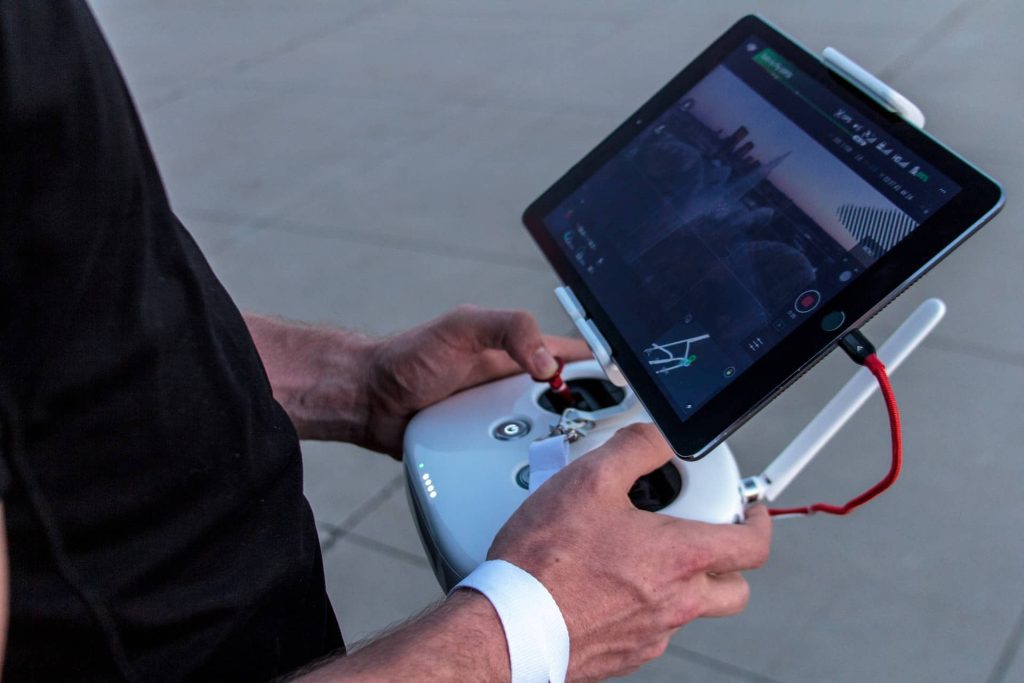
How To Drone Fish – Tip #8
Safety Rules, Laws & Regulations
Make sure you are always flying your drone in a legal and safe manner by checking the rules and regulations in your country. For example, if you are learning how to drone fish in Australia, download the app ‘Open Sky’ for up-to-date information on where to fly your drone safely.
Keep An Eye On The Weather
Avoid flying your drone in heavy winds, as this will quickly drain the battery. Additionally, avoid flying with a large payload, as this will also cause the battery life to die quicker.
It is crucial to carefully watch the battery levels of the drone and remote to monitor performance.
You can check the winds and weather conditions on:
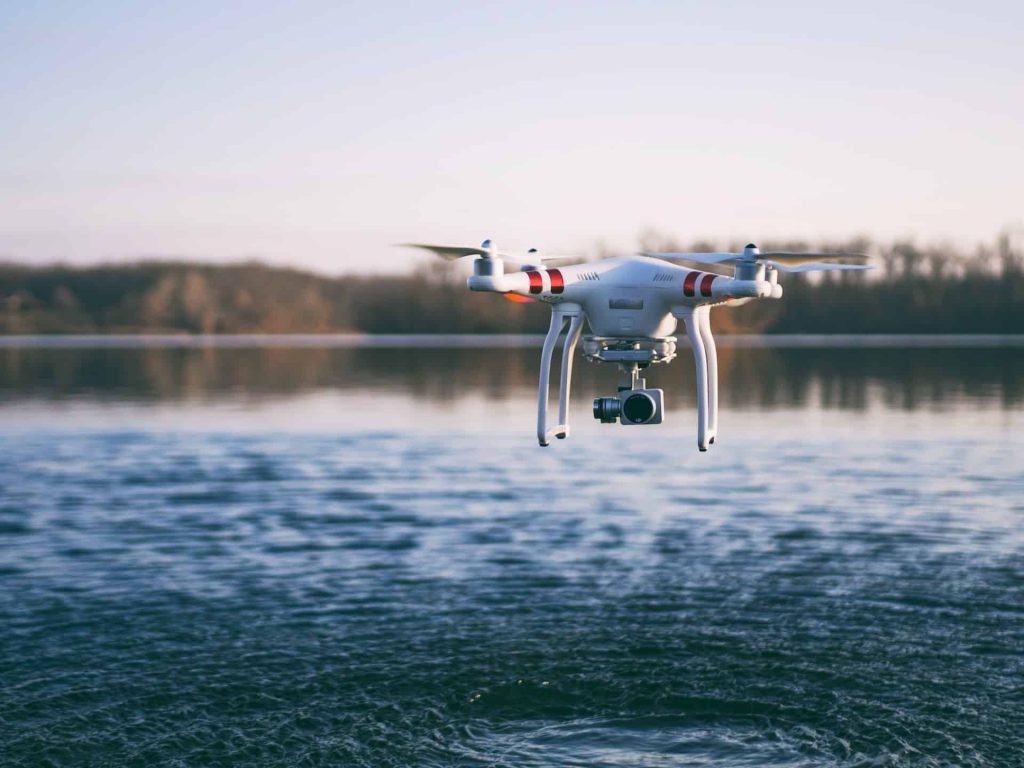
How To Drone Fish – Take-Away Note
Conclusion
Drone fishing can be a fun and exciting way to fish, but you must be properly prepared before hitting the water. Make sure you know your drone and its capabilities and what type of fishing rod, reel, line and sinkers will work best for your target species.
When learning how to drone fish, it’s essential to familiarize yourself with some basic drone rigs and always fly your drone in a safe and legal manner. Have plenty of spare parts on hand if something goes wrong, and monitor both the drone’s battery levels and height during each flight.
Learning how to drone fish is a fun experience, and by following these tips, you’ll be able to have a successful day out on the water catching fish with your drone. So, what are you waiting for? Get out there and start drone fishing today!
You Might Also Like:
If you enjoyed reading this blog post on how to drone fish, you might also be interested in:


Recent Comments